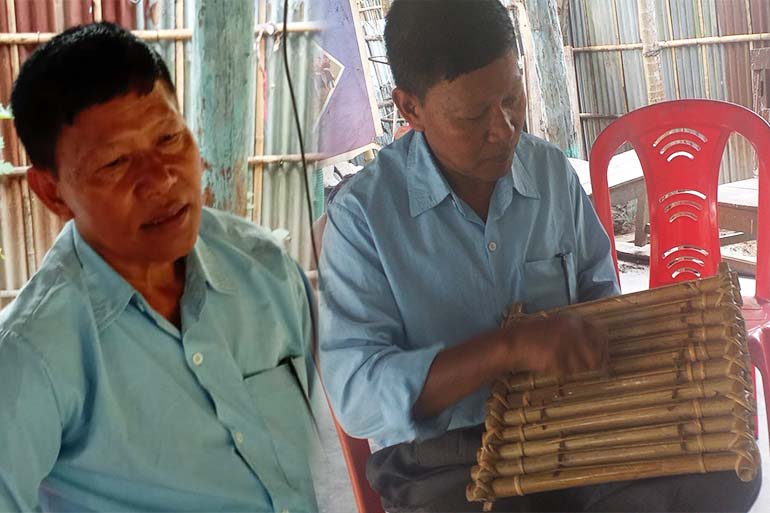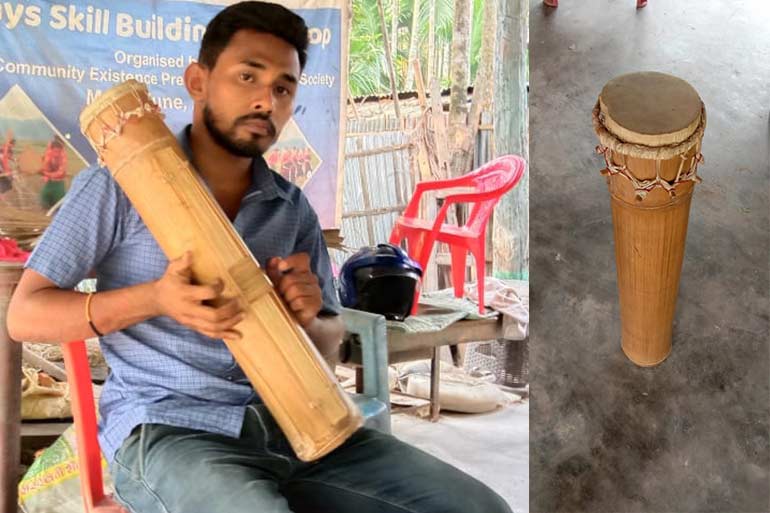Meet the North Bengal tribe which considers female foeticide a great sin

The village is called Ketugaburjot, the last ‘t’ is a soft one. If the name sounds unfamiliar, so are the people inhabiting it. This village, under Siliguri’s Naxalbari police station, is home to a fast vanishing tribe known as the Dhimal.
Among the most significant tribal populations of North Bengal, only about 1,000 members of the tribe survive today, down from roughly 15,000 a few years before Independence. A survey conducted by the British then had found that geographically speaking, the Dhimal inhabited territories stretching from the Nepal border to Alipurduar and the Assam border. Today, the population is limited to a few villages within Naxalbari block. Despite the abysmally low numbers, however, the community is unwilling to increase the population growth rate. Their reason: an increase in numbers would mean malnourished children, and fewer opportunities for their education, which would add to the community’s problems. Needless to say, economic backwardness is a hallmark of nearly every Dhimal family.

A conversation with the inhabitants of Ketugaburjot is an illuminating experience. Among their absolute taboos, for example, is female foeticide, considered the greatest of sins. Neither does the community accept child marriage. Instead, in a practise that is almost unprecedented elsewhere, it encourages its men to marry women older than them. The logic offered here is that, since women become mothers after marriage, and raise children as well as look after the household, it helps if they are a little older and more mature than their husbands. Where the outside world has now accepted the convention of one or two children per family, the Dhimal have limited that number to not more than four. Community elder Garjen Kumar Mallik says, “Though the number of our people has gone down radically, we still do not accept more than four children in a family. The main reasons for that are malnutrition, economic hardship, and the problems of educating children.”
Among the most significant tribal populations of North Bengal, only about 1,000 members of the tribe survive today, down from roughly 15,000 a few years before Independence.
Also remarkable is yet another practise, that of asking for a woman’s consent about whether she wishes to marry at all, and if yes, whether she likes the man she is to be married to. If she doesn’t agree, however, there is an alternative – abduct the woman and marry her off anyway!
The principal livelihood in the area is agriculture, though a few members of the community are also employed in offices. Ketugaburjot has a Dhimal population of around 550, of whom five have been to college, while 12 have crossed the Higher Secondary hurdle. During the summer months of Boisakh and Joyistho (mid-April to mid-June, roughly), when the paddy is harvested, the Dhimal celebrate a festival called Deradi Puja, with much singing and dancing.
Among their absolute taboos, for example, is female foeticide, considered the greatest of sins. Neither does the community accept child marriage. Instead, in a practise that is almost unprecedented elsewhere, it encourages its men to marry women older than them.
As with tribes across the world, the Dhimal have their own distinct culture, a lot of which is now in danger of becoming extinct. Enter Garjen Kumar Mallik, the community elder who is also a school teacher, and who has come up with a few ideas to conserve and protect the Dhimal identity. A student of bioscience, who graduated from Siliguri College in 1983, Mallik now teaches Life Science at Panighata High School. Alongside, he has formed a team for the preservation of Dhimal culture, and called it the Dhimal Jaati Astitwo Raksha Sangram Committee, of which he is the secretary. At present, the committee is demanding Scheduled Tribe status from the Central government. Says Mallik, “Before Independence, we were a Scheduled Tribe. But now, we’re categorised as OBCs. Why should that be?”

The Dhimal are proud bearers of an ancient musical tradition, too, and among their instruments are the tunjai, gumna, dhol, chunga merdong, and morchunga. Made principally out of bamboo, these instruments were also dying out, though Mallik is waging a relentless war to ensure their survival. To that end, he is now teaching younger generations to both make and play the instruments. He has even translated a few Tagore songs into the Dhimal language, and written and composed a few of his own, too.
Ketugaburjot has a Dhimal population of around 550, of whom five have been to college, while 12 have crossed the Higher Secondary hurdle.
As a vanishing tribe, the Dhimal have been the subjects of research by students from various universities. A few students from the Russian capital of Moscow actually stayed in the village as Mallik’s house guests. Inevitably, the 58-year-old teacher finds himself at the centre of almost every research project, but laments that he cannot find a single Dhimal student in his own school. In this connection, he has another proposal: outsiders who visit the area to conduct research on the Dhimal must needs spend the night in Siliguri, since Naxalbari offers nothing in terms of decent accommodation. So why shouldn’t a few Dhimal villages offer homestay facilities?
Should that indeed happen, who knows, your next destination could well be a Dhimal village!










